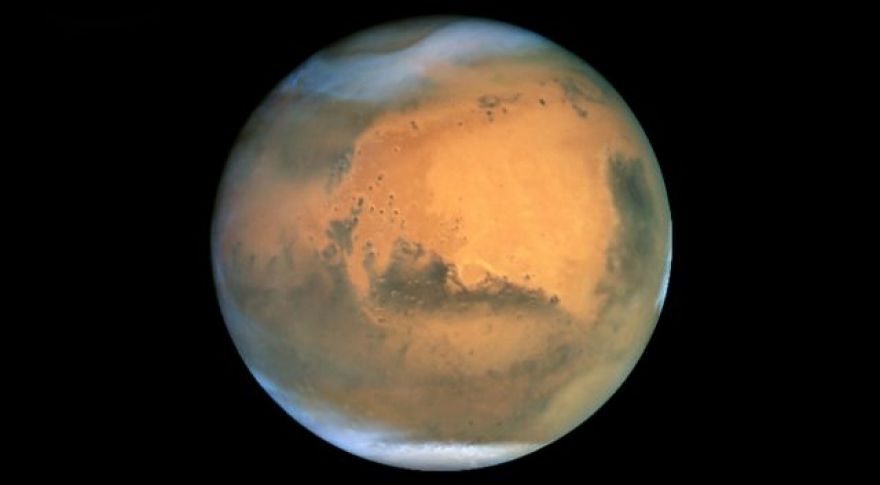
NASA Releases Map of Water Ice on Mars
NASA is working on the necessary technology to return to the moon, but that’s just a stepping stone to the agency’s goal of sending the first humans to Mars. Reaching will be a challenge, but the agency is already working to narrow down landing sites. A new NASA-led study based on the availability of water ice hiding just below the surface.
Traditionally, astronauts have brought everything they need for a mission from Earth. That vastly increases the mass of launch vehicles and limits what the team gets to bring. That’s why NASa is exploring the possibility of collecting the necessary resources and materials at the destination, which is known as “in situ resource utilization.
Water is particularly heavy, and humans need a lot of it, so it would be a big help to harvest water on Mars. NASA believes water availability should be the main deciding factor when choosing a landing site on the red planet. Luckily, NASA’s Mars Reconnaissance Orbiter (MRO) and Mars Odyssey orbiter have provided ample data on where we can find water.
Liquid water doesn’t last long in Mars’ thin atmosphere, but water ice beneath the surface is stable and easily accessible in the middle-latitudes. The map below shows estimated ice depths based on data from the MRO and Odyssey. Warmer colors indicate deeper ice deposits, and cooler colors show ice that is closer to the surface. The black portions are covered with too much dust for a safe landing. The highlighted box, in a region called Arcadia Planitia, indicates prime landing areas.
The purple areas of the map could have water ice just an inch below the surface. So, astronauts wouldn’t need any special excavation tools to extract it. In the red areas, ice is at least a few feet down. Extracting water on Mars won’t just keep astronauts hydrated — you can also use it to produce hydrogen and oxygen fuel for rockets. Setting up fuel production could make regular journeys to and from Mars much less expensive.
For now, NASA has a lot of work ahead of it before it can nail down a landing site. The agency is nearing completion of the Space Launch System (SLS) that will send astronauts to the Moon in the early 2020s. The SLS is also suitable for a Mars mission, but scientists are still evaluating the health implications of human deep space exploration.
Now read: